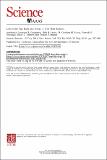| dc.contributor.author | Laurence R Gesquiere, Niki H Learn, M Carolina M Simao, Patrick O Onyango, Susan C Alberts, Jeanne Altmann | |
| dc.date.accessioned | 2020-07-24T08:12:40Z | |
| dc.date.available | 2020-07-24T08:12:40Z | |
| dc.date.issued | 2011-07-15 | |
| dc.identifier.uri | https://repository.maseno.ac.ke/handle/123456789/1562 | |
| dc.description | Please refer to the complete version of record at http://www.sciencemag.org/. | en_US |
| dc.description.abstract | In social hierarchies, dominant individuals experience reproductive and health benefits, but the costs of social dominance remain a topic of debate. Prevailing hypotheses predict that higher-ranking males experience higher testosterone and glucocorticoid (stress hormone) levels than lower-ranking males when hierarchies are unstable but not otherwise. In this long-term study of rank-related stress in a natural population of savannah baboons (Papio cynocephalus), high-ranking males had higher testosterone and lower glucocorticoid levels than other males, regardless of hierarchy stability. The singular exception was for the highest-ranking (alpha) males, who exhibited both high testosterone and high glucocorticoid levels. In particular, alpha males exhibited much higher stress hormone levels than second-ranking (beta) males, suggesting that being at the very top may be more costly than previously thought. | en_US |
| dc.publisher | American Association for the Advancement of Science | en_US |
| dc.title | Life at the top: rank and stress in wild male baboons | en_US |
| dc.type | Article | en_US |

